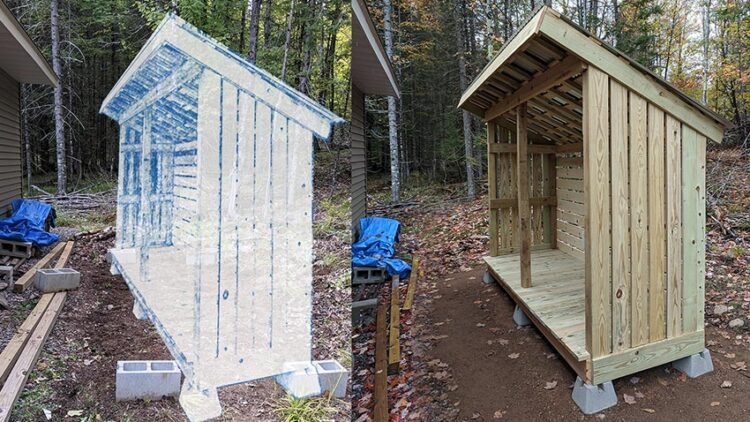6 tips to building a woodshed
On those cold, crisp fall and winter nights it’s hard to beat the crackle and warmth of your fireplace. But how and where to store your cache of wood plays a key role in the enjoyment of sitting around the fire. Which is why a woodshed could be just your ticket. So, let’s shed some light on keeping your wood weather protected, easy to access and on-the-ready to keep the home fires burning.
1. FEATURES & PLACEMENT
First things first: Are you an every-night fire or just a weekend-fire family? How much you burn will help determine the size, function and placement for a woodshed. If you burn regularly, consider a woodshed closer to the house that can hold the wood you need with an open front for easy accessibility. Weatherproofing options and airflow are also important regardless of the size. Look into a slanted roof instead of a flat one, a roof made of tin to help rain, leaves and snow slide off, front and back airflow to help keep wood dry.
2. The Plan
Once you’ve thought about the features and placement it’s time to find a plan. As it just so happens, the Internet is a fine place to start. There are options both free and paid. For free options, you can go to construct101.com. If you have a subscription to Popular Mechanics you can follow their instructions on how to build a firewood shack.
3. Preparation
Make a list of the tools and equipment you’ll need to build from your plan. For instance, drills, saws, levels, squares, sawhorses, shovels, ladders, tampers to level the ground and the amount of extension cords you’ll need. And, perhaps a UTV to move and dump gravel. Always best to have a list than try to remember what’s needed come time to build.
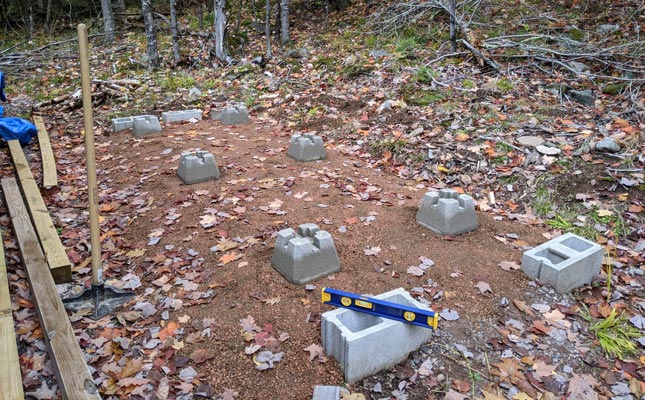
4. Materials
From your plans, you’ll know what you need for materials. But costs can vary depending on the type and quality of materials you want to use. So, think of how you want your woodshed to perform and what you want it to look like. For example, what type of wood? This will be outdoors, so normally cedar or treated lumber works best. Cedar is more decorative, but more cost. Treated lumber is more cost-efficient, but without the cedar aesthetics. So, will your woodshed be more visible or a decorative add-on to your yard? Or more hidden and meant just for function? A good question that can answer what direction you will go with for the materials you select. Also, for the foundation you can consider both concrete or gravel—weighing the benefit of both from the cost and efforts required.
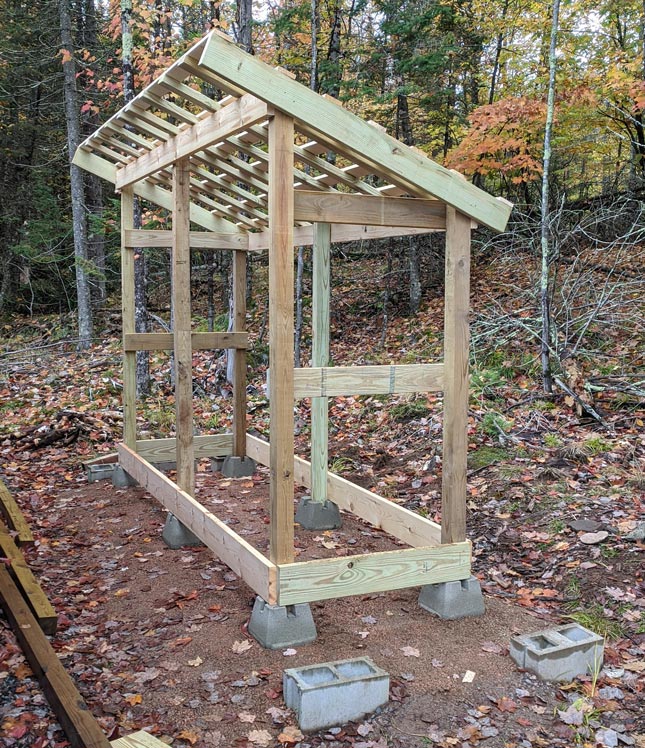
5. Estimating
So now the big question, what’s the cost? The best way to get an estimate is to have an exact list of quantities and sizes of the lumber and hardware you need. Use the list to price out the materials yourself. Or, bring the list to your nearest Chase Lumber and have it priced by one of our estimators (also, let them know the timeframe you need the estimate and materials by). If you’re not sure what kind of lumber you want, get an estimate for different types, such as cedar or treated lumber (most popular is treated pine). You’ll want to consider stainless steel hardware as well for durability.
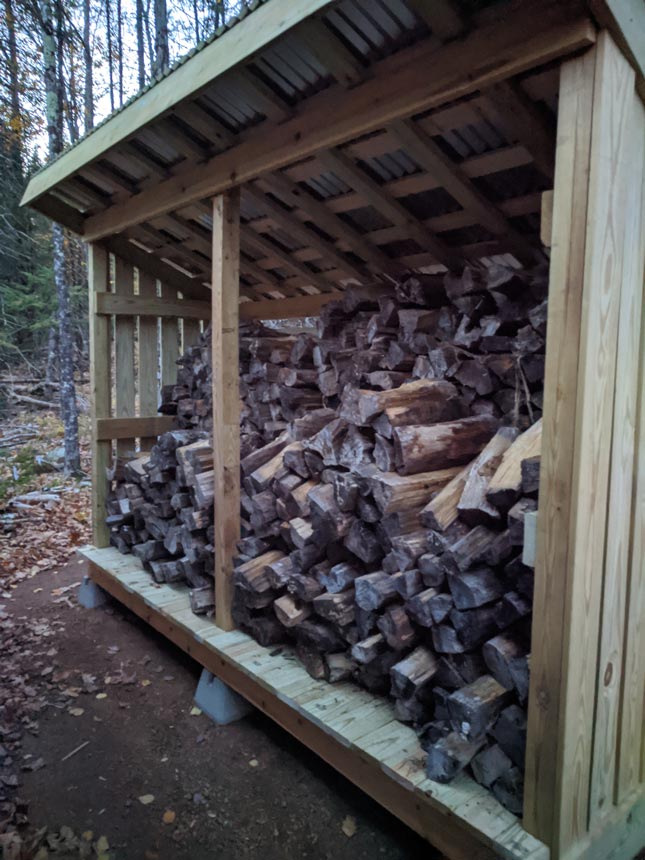
6. Hidden costs and efforts
Planning carefully will help eliminate unexpected or higher costs. For example, how you level the ground could be done just as effectively using gravel as concrete. Concrete certainly has its advantages, but increases the cost (labor, material, etc.). Having a concise list of tools and equipment needed will help you avoid time lost getting or purchasing what’s missing. Stage the materials and work areas in order of construction need to build more efficiently. And, of course, measure twice cut once.
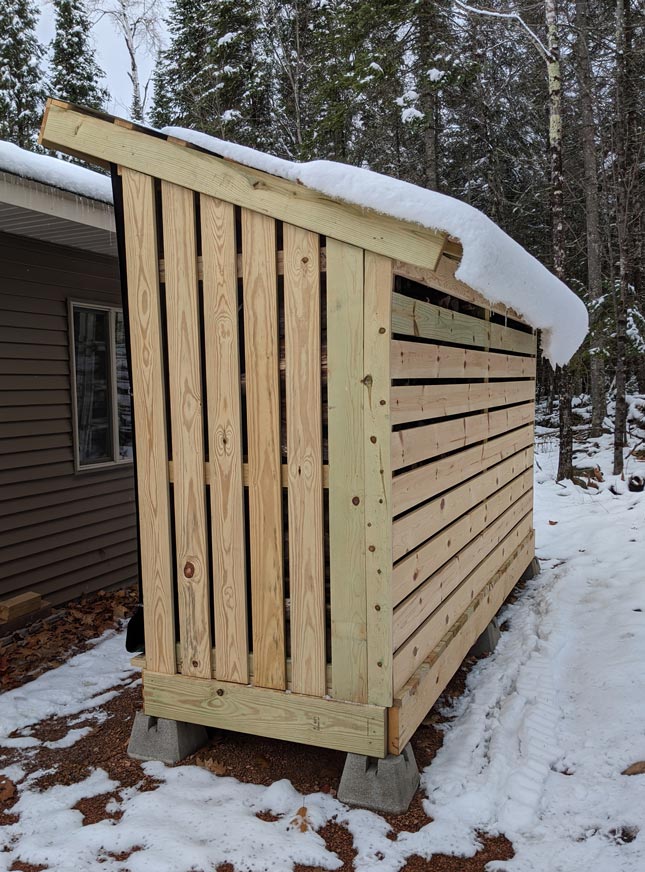
We’d like to thank the Meyer family for documenting the build of their woodshed for this blog. For help with your woodshed project from materials to advice on building it, stop into your nearest Chase Lumber store and let’s talk.

